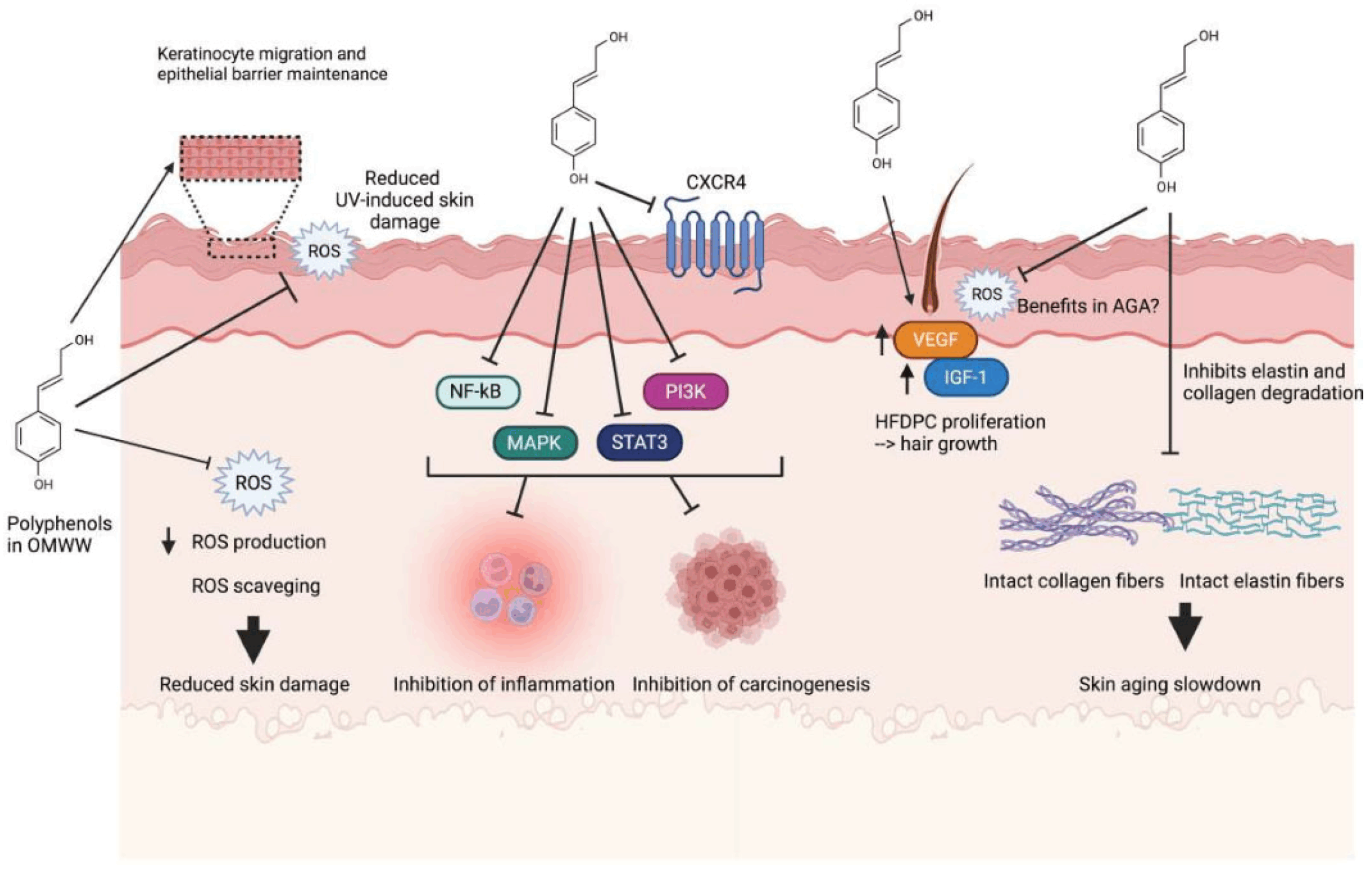Olive mill wastewater (OMWW), a major byproduct of olive oil production, has long been considered an environmental pollutant. However, its rich phenolic content, surpassing even that of olive oil, is now gaining attention for its dermatological potential. These bioactive compounds show promise in antioxidant, anti-inflammatory, antimicrobial, and regenerative skincare. Valorizing OMWW not only addresses ecological waste concerns but also aligns with the rising demand for sustainable and effective natural cosmeceuticals.
Key Findings
- Bioactive Composition: OMWW contains >50 phenolic compounds, including hydroxytyrosol, tyrosol, oleuropein, and flavonoids, along with minerals, lipids, and small amounts of vitamin E—making it a rich cosmeceutical reservoir.
- Antioxidant Activity: OMWW extracts reduced ROS by over 60% in keratinocytes and dermal papilla cells—more effective than ascorbic acid—protecting against collagen degradation and photoaging.
- Anti-Inflammatory Effects: Polyphenols in OMWW downregulated NF-κB and MAPK, significantly reducing IL-8, iNOS, and COX-2 expression in skin cells—comparable to hydrocortisone.
- Photoprotection: Compounds like hydroxytyrosol neutralize UV-induced free radicals and cytokines that cause erythema and aging.
- Anti-Aging Effects: Hydroxytyrosol and oleuropein inhibited collagenase and elastase, helping preserve skin structure and reduce wrinkles.
- Antimicrobial Benefits: OMWW showed strong action against acne-related bacteria such as Staphylococcus aureus and Propionibacterium acnes.
- Skin Barrier Support: Sugar- and mineral-rich OMWW fractions aided keratinocyte repair and improved hydration and elasticity.
- Melanoma Control: OMWW selectively inhibited melanoma cells while promoting healthy keratinocyte growth, with oleuropein triggering apoptosis in cancer pathways.
- Hair Health: OMWW boosted growth factors like IGF-1 and VEGF in human follicle dermal papilla cells, supporting hair growth and follicle health.
- Formulation Innovations: Delivery strategies such as nanoemulsions, liposomes, and microneedling improve OMWW compound bioavailability and skin penetration.
- Sustainability Impact: Valorization projects have shown economic viability, converting OMWW into high-value skincare ingredients using eco-friendly extraction techniques like ultrasound-assisted and membrane-based purification.
OMWW offers a novel, potent, and eco-conscious source of dermatological actives with benefits that span anti-aging, photoprotection, hydration, and acne care. Future steps include clinical validation, standardization, and refining formulation strategies for maximum bioactivity. As both a functional and sustainable innovation, OMWW represents a promising leap forward for circular-economy cosmeceuticals.
Link to the study: https://www.mdpi.com/2079-9284/12/4/142


